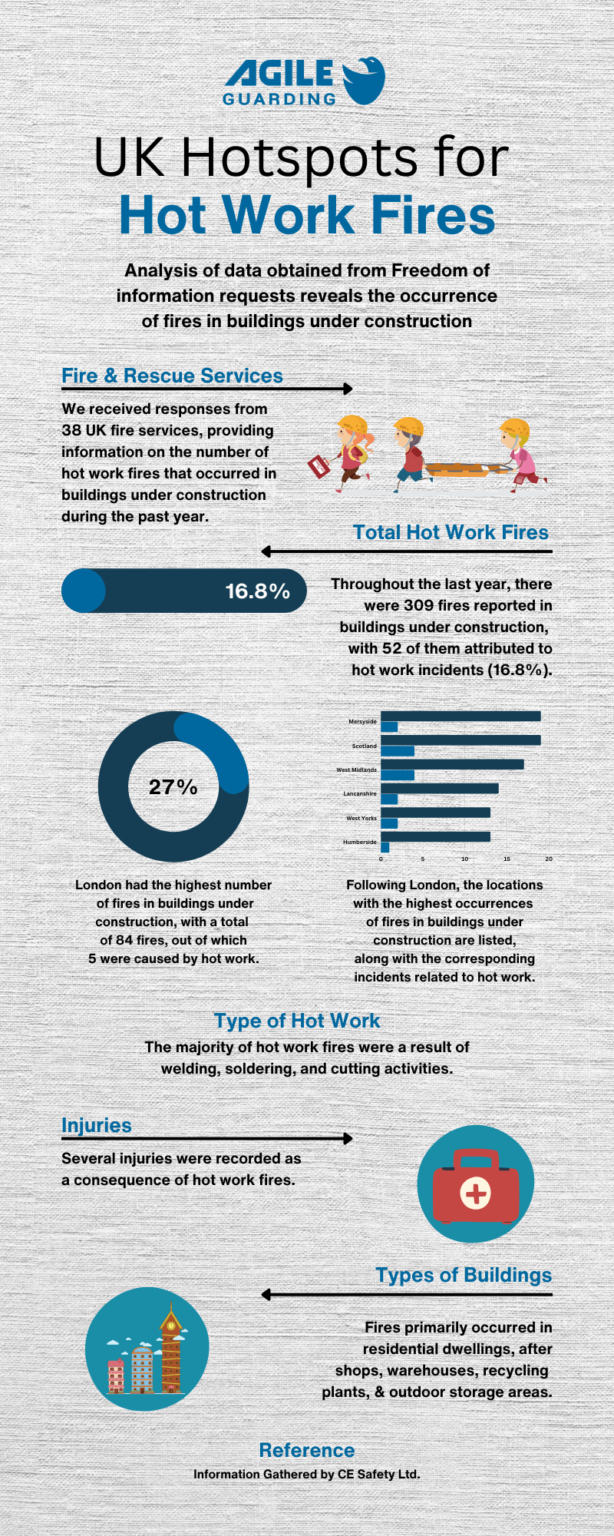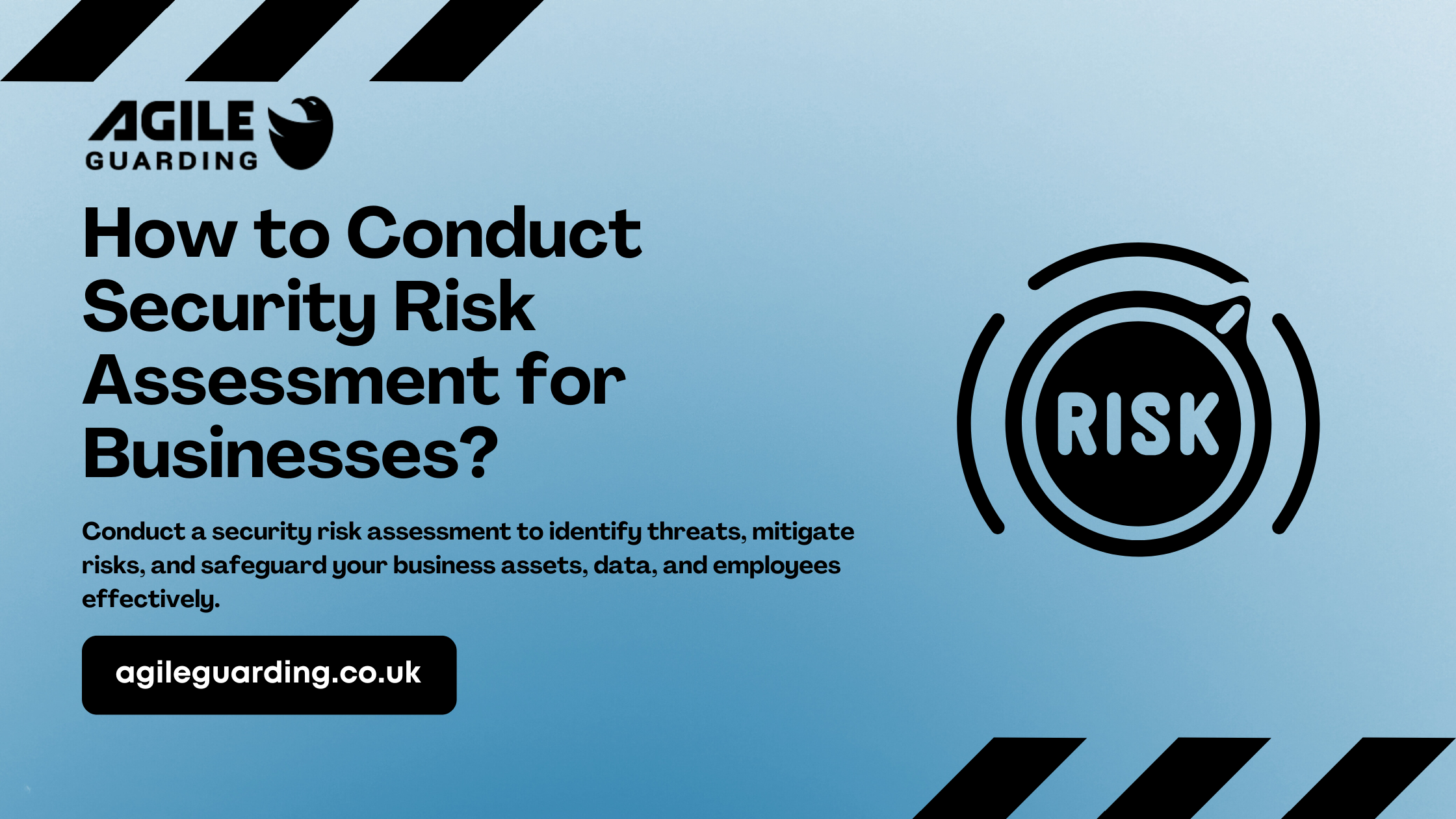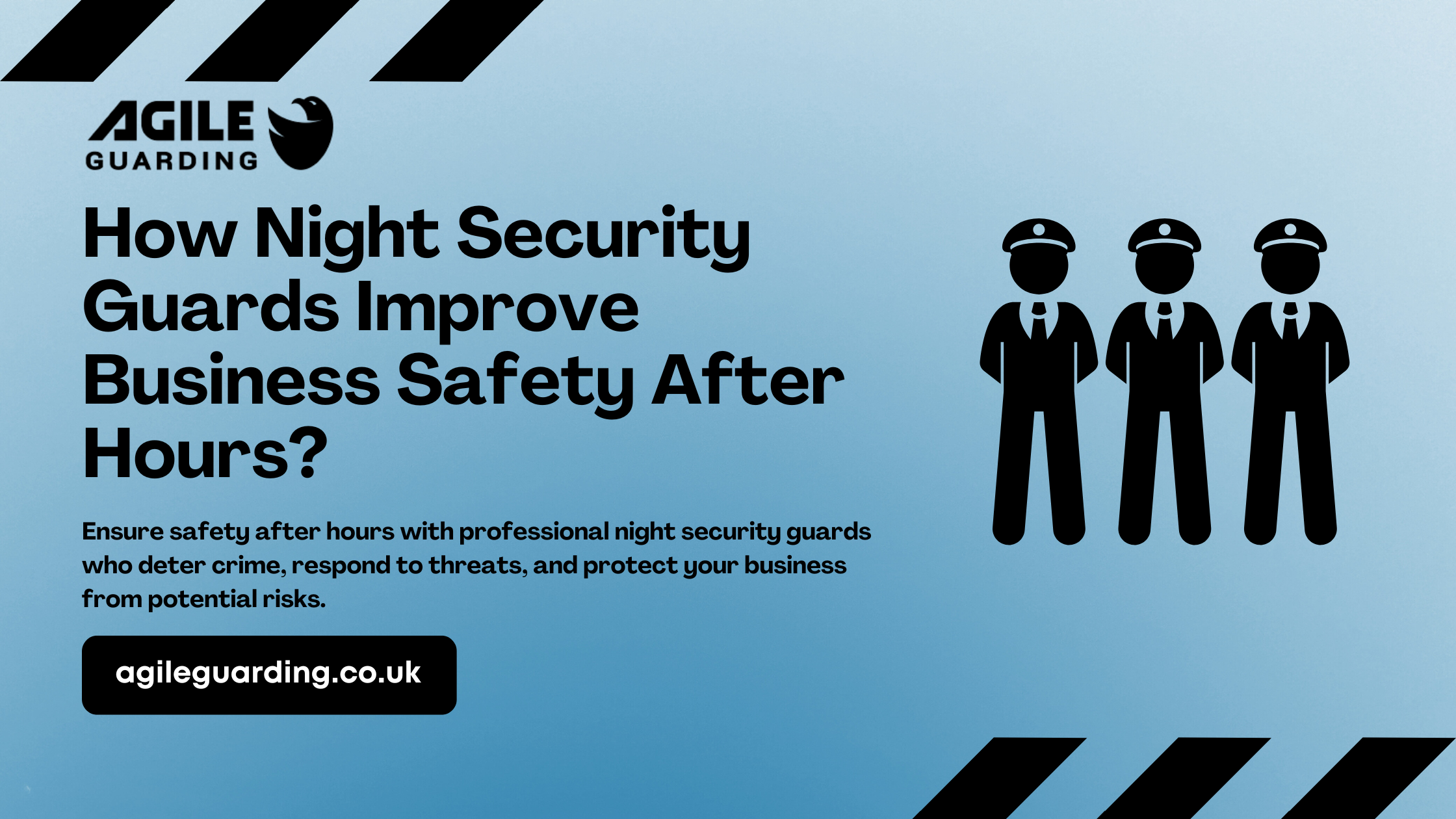The Benefits of Combining Physical and Cybersecurity Measures Apart from the countless benefits of the digital world of today, the complex nature …
6 Common Security Risks on Construction Sites and How to Mitigate Them
Attention, construction site managers and industry professionals!
The world of construction is an exhilarating adventure filled with progress and achievement. However, amidst the dynamic activity and valuable assets, there looms a crucial issue, security risks. These risks have the potential to disrupt projects, incur financial losses, and compromise the safety of your team. But fret not! We will plunge into the realm of security for construction sites, equipping you with practical and effective strategies to mitigate common risks. From deterring criminal activities to protecting your investments, we will explore a comprehensive array of security measures that will fortify your construction site. Whether it’s defending against trespassers, thwarting the threat of fire and water damage, or navigating the unexpected challenges such as the recent pandemic, we have got you covered. So, let’s embark on this enlightening journey together as we unveil the seven biggest risks in the construction industry.
Get ready to seize control of your construction site’s security and pave the way for a seamless path towards success! Safety is paramount on construction sites, but ensuring the security of your employees and property is equally vital. With various vulnerabilities inherent in construction sites, they become tempting targets for criminals. As you conduct your security assessment, be vigilant for these common security risks, enabling you to swiftly implement effective mitigation strategies.
CE Safety has gathered data indicating the number of fires that occurred in buildings under construction in the UK during the past year. They obtained this information by submitting Freedom of Information Requests to all 45 of the UK’s fire and rescue services.
The data reveals the following key points:
- There were a total of 309 fires in buildings undergoing renovations.
- Fires caused by hot work accounted for 16% of all fires in buildings under construction, totaling 52 incidents.
- The regions with the highest number of fires in buildings under construction were London (84), Merseyside (19), and Scotland (19).
- Regarding fires caused by hot work, the regions most affected were London (5), Derbyshire (5), South Yorkshire (4), West Midland (4), and Scotland (4).
- Over the past decade, the cost of hot work fires has resulted in a total loss of approximately £69.8 million, as reported by Zurich.
- Despite the trade downtime during the pandemic, the total number of construction fires was higher than the previous year’s count of 204.

1. Safety of workers
Worker safety holds immense importance in every construction project, encompassing not just physical dangers but also security perils. Construction sites are susceptible to diverse security threats that can endanger the welfare of workers and impede project advancement.
Workers in the construction industry face unsafe situations on a daily basis, such as excessive noise levels, exposure to extreme temperatures, and the physical strain of carrying heavy equipment. Additionally, the construction site is a busy environment with a constant flow of people, materials, and equipment. Moreover, the rugged terrain and various obstacles increase the risk of slips and falls for workers.
2. Theft
Due to the valuable tools, machinery, and materials present, construction sites become appealing to thieves. The loss of valuable equipment not only disrupts the progress of the project but also compromises worker safety.
The ease of accessing construction sites after-hours makes them attractive targets for thieves. The lack of comprehensive security measures in many construction companies contributes to the thieves’ confidence in not getting caught.
3. Liability problems
Liability problems due to security risks on construction sites can have severe consequences for construction companies and project managers. Personal injury or harm to individuals on the site, and property damage, can lead to legal liability and compensation claims. Regulatory non-compliance further increases liability risks. Thieves and trespassers have the potential to create property liability issues on construction sites.
For instance, if an intruder is harmed on the site, they can file a liability lawsuit against the company and hold them responsible, even if their own actions were illegal. Another scenario involves squatters who temporarily occupy a construction site for warmth and subsequently suffer injuries. Despite trespassing, they can still pursue a liability claim. These liability claims can result in significant financial burdens. Construction sites can be held liable for accidents or damages they cause.
4. Equipment Issues
Frequent maintenance of equipment can pose an increased safety hazard. It might be appropriate to consider upgrading the construction equipment. Older equipment that experiences frequent breakdowns can cause project delays and higher expenses. Problems with electrical, mechanical, and pressure equipment are also common.
This can quickly result in lost workdays and missed deadlines, further driving up costs. To minimise equipment-related issues, investing in an asset management system is advisable. Regular equipment maintenance can indeed introduce safety risks and potentially disrupt construction projects.
In such instances, it may be necessary to contemplate upgrading the construction equipment. Older equipment that breaks down frequently can cause project delays and increased expenses. Moreover, issues with electrical, mechanical, and pressure equipment can significantly impact productivity and project timelines.
5. Fire Hazards:
Fire hazards present a substantial danger on construction sites. Structures under construction are particularly susceptible to fires because they lack essential fire protection systems like smoke detectors, sprinklers, and fire alarms, which are typically installed near project completion. Construction sites rely on various sources of ignition, and when flammable items and tools are in close proximity, sparks can easily ignite fires. Additionally, natural phenomena like lightning can trigger fires, especially on construction sites containing solvents, waste materials, combustibles, and piles of trash.
Even after work hours, construction sites remain at risk of trespassing, vandalism, and other malicious acts that can lead to fires or flooding. The absence of personnel does not eliminate the potential for fire incidents, as environmental factors, such as the wind tunnel effect in empty spaces, can further escalate the risk.
6. Vandalism:
Vandalism poses a security issue that can have repercussions on worker safety. Acts of malicious intent, such as damaging property, graffiti, or deliberately destroying equipment, can generate hazards and elevate the likelihood of accidents. Vandalism on construction sites can manifest in various forms, from minor acts by bored individuals using spray paint to more severe incidents that jeopardise the project. When a construction project encounters community resistance, there is a risk that someone may try to vandalise or destroy the ongoing work. It is important to note that acts of vandalism can escalate to more serious crimes, such as arson.
How to Reduce Risk on Construction Site:
- Training is a highly effective method for reducing risk in construction. It encompasses instruction on site processes, proper equipment usage, and determining the appropriate gear for each activity. Companies with a strong safety record prioritise investing in suitable personal protection equipment (PPE) that fits correctly and is worn for the designated tasks. The use of high-quality PPE aids in reducing injuries.
- Construction site video surveillance is an option that not only mitigates risk but also provides various additional benefits. It helps minimise damage and liability, reduces expenses, and identifies areas for productivity and safety improvements. Remote video surveillance combines video analytics with trained monitoring operators to identify potential fall hazards, misplaced tools and materials, and other safety risks. The surveillance system operates from a secure location away from the construction site, enabling continuous monitoring even during severe weather. The recorded video serves as evidence for liability claims and ongoing investigations.
- It is crucial to prioritise fire protection measures on construction sites to safeguard the structures, company assets, and employees. Implementing a comprehensive multi-layer fire protection system is an effective
- To effectively respond to breaches and security incidents, it is essential to have measures in place such as alarm systems, motion sensors, and silent alarms that alert relevant parties. Clear guidelines for onsite guards and regular communication with local police ensure timely monitoring of the project’s surroundings.
- To protect the construction site, establish perimeter security by minimising entry points and installing fencing and barriers. Use warning signs and implement camera systems for continuous surveillance, especially in hard-to-reach areas. Ensure proper lighting to deter criminals and enhance camera effectiveness. These security measures aim to create a secure environment, control access, discourage criminals, and enhance surveillance capabilities.
- To protect the property, it is advisable to establish a visible security presence with round-the-clock guards, as this can deter potential vandals from considering destructive actions.
- While your materials and equipment are valuable assets, it is important not to overlook the safety of your employees. Workers who leave the jobsite may become victims for robberies, especially if they are carrying tools or supplies.It is advisable to promote the practice of employees leaving in groups, as this provides increased security and safety when their shifts end.
In a Verdict
By incorporating these measures, construction operations can strengthen their defence against cyber threats and ensure comprehensive security.
Securing construction sites and mitigating common security risks is an essential responsibility for construction site managers. By addressing the identified risks and implementing effective mitigation strategies, construction companies can create a safer working environment, protect their assets, and minimise financial losses. Construction site security requires a multi-faceted approach that includes training, site organisation, physical security measures, and effective response systems. The implementation of security measures not only protects construction sites but also enhances productivity, improves project timelines, and promotes the well-being of workers.
If you need security services for your construction site or other commercial property, contact the experienced professionals at Agile Guarding Services Limited, a Bolton-based security company established in 2011. We offer customised security and safety solutions to fulfil customers’ needs throughout Bolton and North West UK to businesses of all sizes. Give us a call today to discuss your security needs.
Read our blogs
How to Conduct Security Risk Assessment for Businesses? The technologically advanced and fast-paced world of today is faced with multiple security challenges …
Understanding the Role of Keyholding Services in Business Security Businesses of all scales must prioritize security in today’s dynamic and ever evolving …
How Night Security Guards Improve Business Safety After Hours? Running a business entails more than simply managing day-to-day operations. When the doors …





